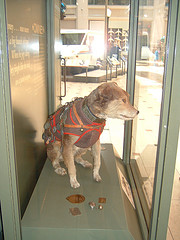
In any given year, the dates 4/4, 6/6, 8/8, 10/10, and 12/12 fall on the same day of the week.
(Also 9/5, 5/9, 7/11, and 11/7.)

In any given year, the dates 4/4, 6/6, 8/8, 10/10, and 12/12 fall on the same day of the week.
(Also 9/5, 5/9, 7/11, and 11/7.)
On May 19, 1780, the sky went dark over New England. From Portland, Maine, to southern New Jersey, candles were required between noon and midnight; frogs piped and evening birds sang.
In Connecticut, the state legislature adjourned because none could see to read or write. Col. Abraham Davenport opposed adjourning the governor’s council: “Either the day of judgment is at hand or it is not,” he said. “If it is, I wish to be found in the line of my duty.”
But the darkness lifted the following night. Probably it was really a combination of heavy clouds, fog, and smoke from forest fires.
Obituary of Angelo Faticoni (1859-1931), “The Human Cork,” New York Herald Tribune, Aug. 13, 1931:
Faticoni could sleep in water, roll up into a ball, lie on his side, or assume any position asked of him. Once he was sewn into a bag and then thrown headforemost into the water, with a twenty-pound cannonball lashed to his legs. His head reappeared on the surface soon afterward, and he remained motionless in that position for eight hours. Another time he swam across the Hudson tied to a chair weighted with lead. Some years ago he went to Harvard to perform for the students and faculty. He had been examined by medical authorities who failed to find support for their theory that he was able to float at such great lengths by the nature of his internal organs, which they believed were different from those of most men. Faticoni had often promised to reveal the secret of how he became ‘The Human Cork,’ but he never did.
“There is a tragic flaw in our precious Constitution, and I don’t know what can be done to fix it. This is it: Only nut cases want to be president.” — Kurt Vonnegut
TO BE LET,
To an Oppidan, a Ruricolist, or a Cosmopolitan, and may be entered upon immediately:The House in STONE Row, lately possessed by CAPT. SIREE. To avoid Verbosity, the Proprietor with Compendiosity will give a Perfunctory description of the Premises, in the Compagination of which he has Sedulously studied the convenience of the Occupant. It is free from Opacity, Tenebrosity, Fumidity, and Injucundity, and no building can have greater Pellucidity or Translucency — in short, its Diaphaneity even in the Crepuscle makes it like a Pharos, and without laud, for its Agglutination and Amenity, it is a most Delectable Commorance; and whoever lives in it will find that the Neighbors have none of the Truculence, the Immanity, the Torvity, the Spinosity, the Putidness, the Pugnacity, nor the Fugacity observable in other parts of the town, but their Propinquity and Consanguinity occasion Jocundity and Pudicity — from which, and the Redolence of the place (even in the dog-days), they are remarkable for Longevity. For terms and particulars apply to JAMES HUTCHINSON, opposite the MARKET-HOUSE.
— “Dub. News.,” quoted in Charles Carroll Bombaugh, Gleanings for the Curious from the Harvest-Fields of Literature, 1890

If there’s a trophy for the world’s best-traveled canine, it belongs to Owney, a mixed-breed terrier who wandered into the Albany post office in 1888. The workers found he was attracted to mail bags, following them onto wagons and eventually trains, so they adopted him as a mascot.
They gave him a collar (“Owney, Post Office, Albany, New York”) and sent him off through the system, where he became a sort of perpetual parcel. Each time he returned to Albany he bore a new assortment of tokens and tags from mail clerks around the country; eventually these numbered 1,017. In 1895 he traveled entirely around the world via train and steamship.
He retired in 1897, and his carefully preserved remains are on display in the U.S. Postal Museum in Washington, D.C.
When Charles Lamb’s farce Mr. H failed disastrously on opening night, he joined in the hissing — because, he said, he was “so damnably afraid of being taken for the author.”
The Russian Poet Lomonossow was accustomed to read his plays to a rude young peasant, whom he had taken into his service for that purpose, to judge (in imitation of Moliere) the more certainly of their theatrical effect, by their impression on an uninformed and unprejudiced mind. One evening the little Huron, while holding the light as usual, suddenly began to weep and sob, in a most piteous way, to the delight of the poet, who cried out in a transport, ‘Waste not your tears before the time, my child; the scenes, in which you will most need them, come not till the fifth act.’ — ‘Oh, no,’ replied the boy, ‘it is not for that, but I want to ***.’
— William Oxberry, ed., The Flowers of Literature, 1822
Twenty-five ants are placed randomly on a meter stick. Each faces east or west. At a signal they all start to march at 1 centimeter per second. Whenever two ants collide they reverse directions. How long must we wait to be sure that all the ants have left the stick?
This sounds immensely complicated, but with a simple insight the answer is immediately clear. What is it?

… are all prime.